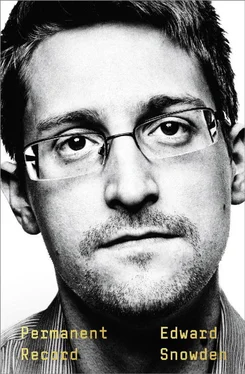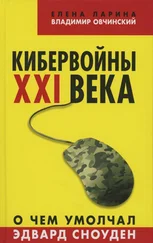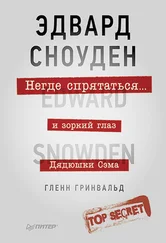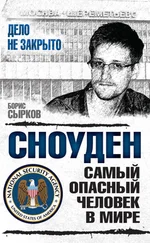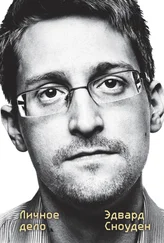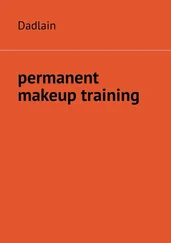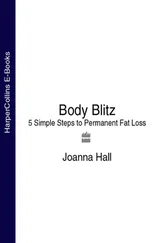The Read phase ended with the files I wanted all neatly organized into folders. But they were still on a computer that wasn’t mine, which was still in the Tunnel underground. Enter, then, the Write phase, which for my purposes meant the agonizingly slow, boring-but-also-cripplingly-scary process of copying the files from the legacy Dells something that I could spirit out of the building.
The easiest and safest way to copy a file off any IC workstation is also the oldest: a camera. Smartphones, of course, are banned in NSA buildings, but workers accidentally bring them in all the time without anyone noticing. They leave them in their gym bags or in the pockets of their windbreakers. If they’re caught with one in a random search and they act goofily abashed instead of screaming panicked Mandarin into their wristwatch, they’re often merely warned, especially if it’s their first offense. But getting a smartphone loaded with NSA secrets out of the Tunnel is a riskier gambit. Odds are that nobody would’ve noticed—or cared—if I walked out with a smartphone, and it might have been an adequate tool for a staffer trying to copy a single torture report, but I wasn’t wild about the idea of taking thousands of pictures of my computer screen in the middle of a top secret facility. Also, the phone would have had to be configured in such a way that even the world’s foremost forensic experts could seize and search it without finding anything on it that they shouldn’t.
I’m going to refrain from publishing how exactly I went about my own writing—my own copying and encryption—so that the NSA will still be standing tomorrow. I will mention, however, what storage technology I used for the copied files. Forget thumbdrives; they’re too bulky for the relatively small amount they store. I went, instead, for SD cards—the acronym stands for Secure Digital. Actually, I went for the mini- and micro-SD cards.
You’ll recognize SD cards if you’ve ever used a digital camera or video camera, or needed more storage on a tablet. They’re tiny little buggers, miracles of nonvolatile flash storage, and—at 20 x 21.5 mm for the mini, 15 x 11 mm for the micro, basically the size of your pinkie fingernail—eminently concealable. You can fit one inside the pried-off square of a Rubik’s Cube, then stick the square back on, and nobody will notice. In other attempts I carried a card in my sock, or, at my most paranoid, in my cheek, so I could swallow it if I had to. Eventually, as I gained confidence, and certainty in my methods of encryption, I’d just keep a card at the bottom of my pocket. They hardly ever triggered metal detectors, and who wouldn’t believe I’d simply forgotten something so small?
The size of SD cards, however, has one downside: they’re extremely slow to write. Copying times for massive volumes of data are always long—at least always longer than you want—but the duration tends to stretch even more when you’re copying not to a speedy hard drive but to a minuscule silicon wafer embedded in plastic. Also, I wasn’t just copying. I was deduplicating, compressing, encrypting, none of which processes could be accomplished simultaneously with any other. I was using all the skills I’d ever acquired in my storage work, because that’s what I was doing, essentially. I was storing the NSA’s storage, making an off-site backup of evidence of the IC’s abuses.
It could take eight hours or more—entire shifts—to fill a card. And though I switched to working nights again, those hours were terrifying. There was the old computer chugging, monitor off, with all but one fluorescent ceiling panel dimmed to save energy in the after-hours. And there I was, turning the monitor back on every once in a while to check the rate of progress and cringing. You know the feeling—the sheer hell of following the completion bar as it indicates 84 percent completed, 85 percent completed … 1:58:53 left … As it filled toward the sweet relief of 100 percent, all files copied, I’d be sweating, seeing shadows and hearing footsteps around every corner.
* * *
EXECUTE: THAT WAS the final step. As each card filled, I had to run my getaway routine. I had to get that vital archive out of the building, past the bosses and military uniforms, down the stairs and out the empty hall, past the badge scans and armed guards and mantraps—those two-doored security zones in which the next door doesn’t open until the previous door shuts and your badge scan is approved, and if it isn’t, or if anything else goes awry, the guards draw their weapons and the doors lock you in and you say, “Well, isn’t this embarrassing?” This—per all the reports I’d been studying, and all the nightmares I’d been having—was where they’d catch me, I was sure of it. Each time I left, I was petrified. I’d have to force myself not to think about the SD card. When you think about it, you act differently, suspiciously.
One unexpected upshot of gaining a better understanding of NSA surveillance was that I’d also gained a better understanding of the dangers I faced. In other words, learning about the agency’s systems had taught me how not to get caught by them. My guides in this regard were the indictments that the government had brought against former agents—mostly real bastards who, in IC jargon, had “exfiltrated” classified information for profit. I compiled, and studied, as many of these indictments as I could. The FBI—the agency that investigates all crime within the IC—took great pride in explaining exactly how they caught their suspects, and believe me, I didn’t mind benefiting from their experience. It seemed that in almost every case, the FBI would wait to make its arrest until the suspect had finished their work and was about to go home. Sometimes they would let the suspect take the material out of a SCIF—a Sensitive Compartmented Information Facility, which is a type of building or room shielded against surveillance—and out into the public, where its very presence was a federal crime. I kept imagining a team of FBI agents lying in wait for me—there, out in the public light, just at the far end of the Tunnel.
I’d usually try to banter with the guards, and this was where my Rubik’s Cube came in most handy. I was known to the guards and to everybody else at the Tunnel as the Rubik’s Cube guy, because I was always working the cube as I walked down the halls. I got so adept I could even solve it one-handed. It became my totem, my spirit toy, and a distraction device as much for myself as for my coworkers. Most of them thought it was an affectation, or a nerdy conversation starter. And it was, but primarily it relieved my anxiety. It calmed me.
I bought a few cubes and handed them out. Anyone who took to it, I’d give them pointers. The more that people got used to them, the less they’d ever want a closer look at mine.
I got along with the guards, or I told myself I did, mostly because I knew where their minds were: elsewhere. I’d done something like their job before, back at CASL. I knew how mind-numbing it was to spend all night standing, feigning vigilance. Your feet hurt. After a while, all the rest of you hurts. And you can get so lonely that you’ll talk to a wall.
I aimed to be more entertaining than the wall, developing my own patter for each human obstacle. There was the one guard I talked to about insomnia and the difficulties of day-sleeping (remember, I was on nights, so this would’ve been around two in the morning). Another guy, we discussed politics. He called Democrats “Demon Rats,” so I’d read Breitbart News in preparation for the conversation. What they all had in common was a reaction to my cube: it made them smile. Over the course of my employment at the Tunnel, pretty much all the guards said some variation of, “Oh man, I used to play with that when I was a kid,” and then, invariably, “I tried to take the stickers off to solve it.” Me too, buddy. Me too.
Читать дальше
